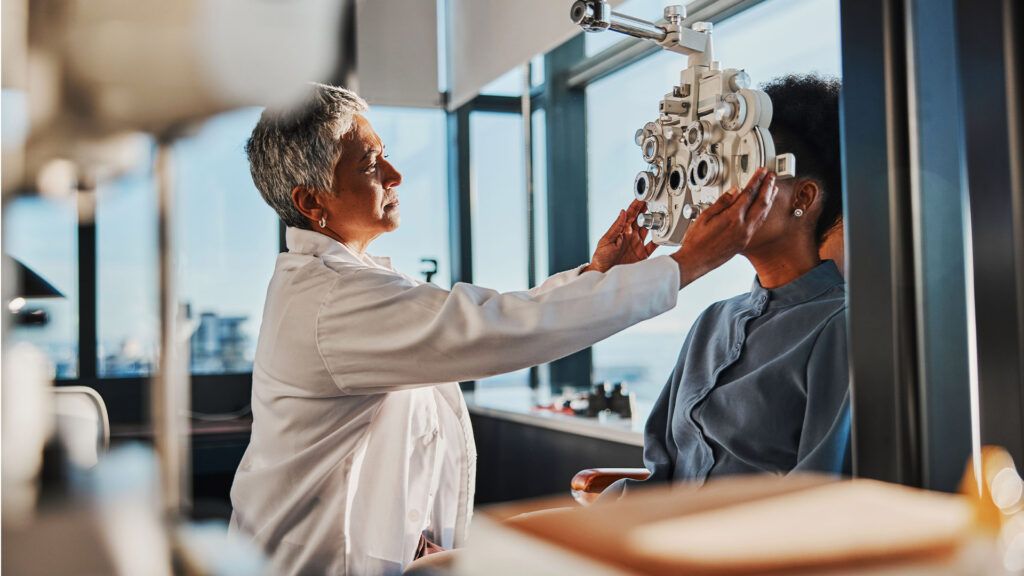Thyroid eye disease (TED) is an inflammatory condition affecting those with thyroid disease. There is no cure, but effective management strategies exist.
Thyroid eye disease, or Graves’ ophthalmopathy, is a condition that links to Graves’ disease and some other types of hyperthyroidism. It affects the muscles and tissues around the eyes, causing inflammation and symptoms such as dry eyes, pain, double vision, and discomfort.
The management and treatment of this condition are complex, as it involves both the immune system and the endocrine (hormone) system. Currently, there is no definitive cure for the disease, but doctors can effectively manage it with treatments. The goal of treatment is to alleviate symptoms and prevent further progression.
This article explores the symptoms and issues of thyroid eye disease and potential treatment and management approaches.

Currently, there is no definitive cure for TED, but doctors have various treatments to manage the condition effectively.
The goal of treatment is to alleviate symptoms and prevent further progression, which can significantly improve quality of life.
Some individuals may experience a remission of symptoms, especially with early and effective intervention. However, it is important to note that the course of the disease can vary greatly among individuals, and ongoing management may be necessary.
What is thyroid eye disease?
TED is an autoimmune condition characterized by inflammation and swelling in the tissues and muscles around the eyes, leading to symptoms. It happens when antibodies that attack the thyroid also attack the eye, although doctors do not understand the exact trigger for this process.
Between
Doctors tailor the treatment and management of TED to the severity of the individual’s symptoms. They also address the underlying thyroid disease.
In mild cases, supportive measures may be enough to ease symptoms. These include:
- sunglasses to treat light sensitivity
- ointments
- artificial tears
- prisms that attach to glasses to correct double vision
- eyepatches to manage double vision
In moderate-to-severe TED, doctors may prescribe corticosteroids to reduce inflammation and swelling of the eyes.
Another option is teprotumumab-trbw (Tepezza), which may also help by blocking the activity of the insulin-like growth factor 1 receptor. This protein appears to contribute to the development of TED.
Some individuals may eventually require surgery once the inflammation and swelling have subsided.
Surgical options include:
- Orbital decompression: The surgeon removes bone lying between the eye socket and sinuses to allow the eye to fall back into its natural position within the eye socket.
- Motility: This involves repositioning specific muscles around the eyes to reduce or eliminate double vision.
- Lid surgery: Eyelid surgery can help correct the position and symmetry of the eyelids, which thyroid eye disease can affect.
Lifestyle modifications such as quitting smoking and maintaining a balanced diet can also help manage the condition.
Common symptoms of TED
- bulging of the eyes
- swelling around the eyes
- redness and irritation
- double vision
- difficulty closing the eyes
- sensitivity to light
These symptoms can lead to complications such as corneal damage and vision impairment if a person does not appropriately manage them.
A person should seek urgent medical attention if they experience:
- sudden or worsening vision problems
- eye pain, especially if it interferes with daily activities or sleep
- signs of infection, such as an increase in redness, swelling, or discharge
These symptoms can signal a progression or complication of TED and may require treatment adjustments or interventions to prevent further harm or irreversible damage to the eyes.
Experts are
In thyroid diseases, such as Graves’ disease, immune cells attack the thyroid. Researchers believe that in TED, these same immune cells also attack cells known as orbital fibroblasts in the tissues of the eyes.
Antibodies are also involved, with antithyrotropin receptor antibodies accumulating in the eye, causing pain and inflammation. The higher the levels of these antibodies, the more severe the TED symptoms.
Smoking is a significant risk factor for developing TED and for more severe cases of the condition.
Preventing TED entirely may not be possible, but specific measures can reduce the risk and severity. This includes managing thyroid levels if a person has a thyroid condition and attending health checkups. Seeing a doctor regularly allows them to detect any issues early on and advise suitable treatment and management strategies.
Furthermore, as smoking has a
The outlook for individuals with TED can vary on the basis of several factors, including the severity at diagnosis, the effectiveness of treatment, and individual health conditions.
However, following treatment, the outlook for TED is excellent, with
Regular follow-ups with healthcare providers, including endocrinologists and ophthalmologists, are crucial for monitoring the disease’s progression and adjusting treatment plans as necessary.
There is no cure for thyroid eye disease (TED), but effective management and treatment options can help manage symptoms and slow progression.
Treatment strategies range from medication, such as eye drops and steroids, to surgical interventions in more severe cases. People should also avoid smoking as it is a significant risk factor for TED.
Anyone with symptoms of TED should seek medical attention promptly, especially in cases of sudden vision changes, persistent eye pain, or signs of infection. Early and effective treatment can significantly improve outcomes and quality of life.
